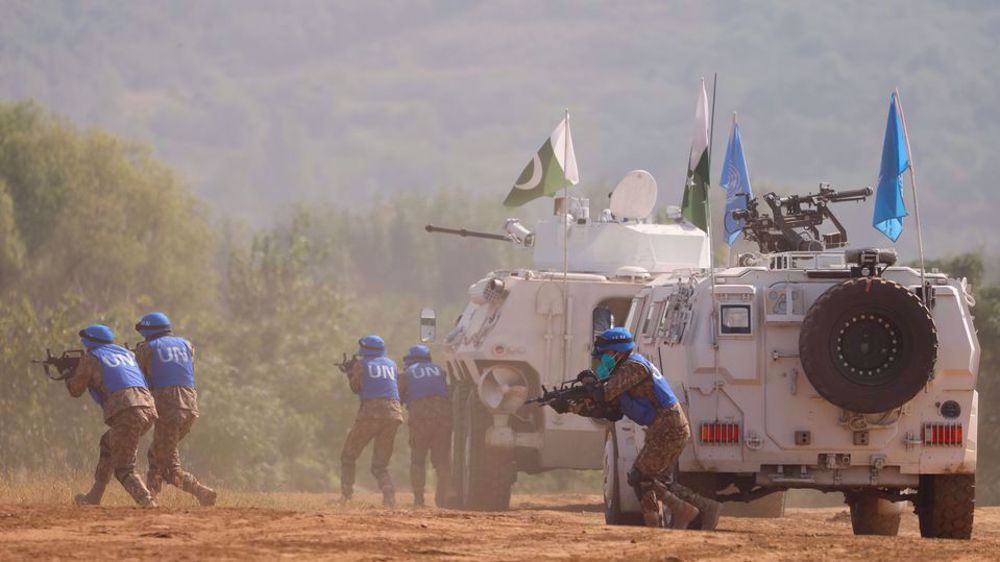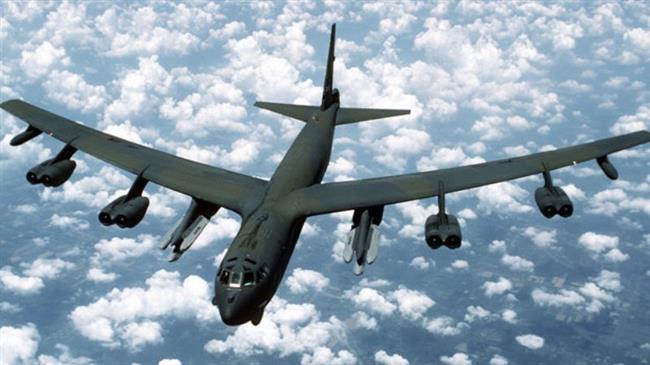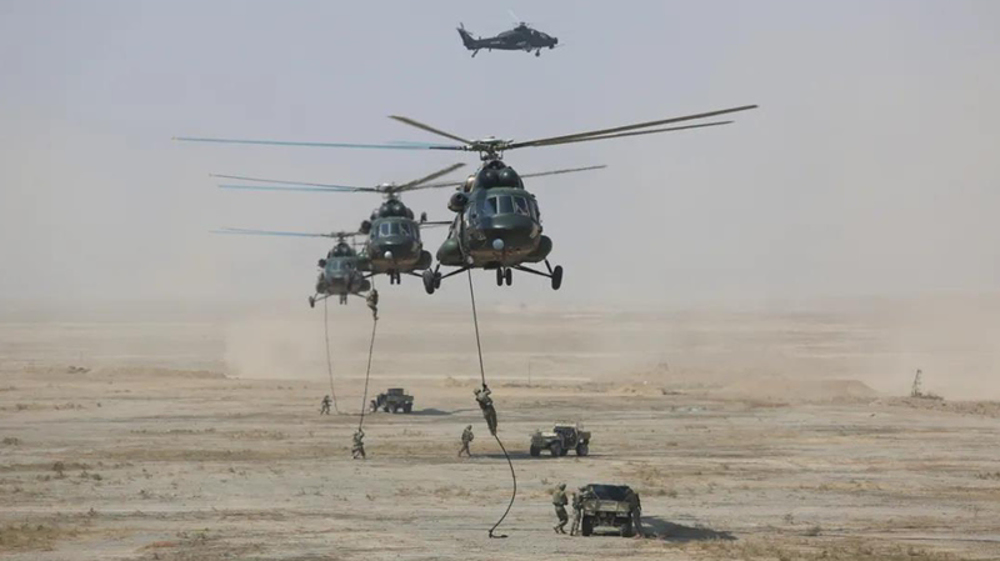China shows off defense diplomacy with multinational peacekeeping exercise
China has highlighted its role in United Nations peacekeeping operations by hosting multinational exercises called "Shared Destiny 2021."
About 1,000 troops from China, Pakistan, Mongolia and Thailand participated in the comprehensive exercise, which kicked off on September 6 at a training base in Queshan County of central China's Henan Province, and ended on Wednesday.
Senior Colonel Lu Jianxin, a Chinese military expert on peacekeeping, told reporters at the base that the exercise underscored China's position as a "staunch defender of world peace and international order."
During the exercise, participating troops completed tasks such as construction of temporary operating bases, battlefield reconnaissance, security guard patrol, armed escort, civilian protection, and response to violence and terrorist attacks.
The foreign troops were also trained using Chinese weapons and other equipment and facilities, which were in the forefront throughout the exercises.
The drill helped assess and advance the capability of peacekeeping standby forces to carry out missions. It also promoted practical cooperation between participating troops.
The exercise came on the 50th anniversary of the recognition of the People's Republic as the representative of China at the United Nations.
China is the largest contributor of peacekeeping forces among major powers as represented by the five permanent members of the UN Security Council.
As the second largest financial contributor, China footed 15% of the total expenses for UN peacekeeping operations in 2020.
The drills also came amid growing concerns over Beijing’s increased military capabilities. China has repeatedly sought to assure its neighboring countries that its military is a force for good, not a threat, even as it drills regularly near Chinese Taipei (Taiwan) and in the disputed South China Sea.
Taiwanese fighter jets land on highway
Meanwhile, Taiwanese fighter jets have practiced landing on a highway in southern Chinese Taipei as part of an annual live-fire military exercise that simulates defending the self-ruled island in an event China “attacks” its air bases.
Three fighters - an F-16, French-made Mirage and a Ching-kuo Indigenous Defense Fighter - plus an E-2 Hawkeye early warning aircraft practiced taking off and landing on a provincial highway in Pingtung county on Wednesday.
The drill, watched by President Tsai Ing-wen, took place on one of the five emergency highways that have been designed in a way which can be pressed into service in the event a Chinese attack takes out air force bases, meaning the air force will still be able to operate.
"Such excellent combat skills, precise and swift movements come from rigorous training and demonstrate the air force's confidence to protect our airspace," Tsai said in a post on her Facebook.
The week-long Han Kuang drills are taking place around Chinese Taipei, with other exercises aiming to practice repelling a Chinese invasion, protecting critical infrastructure and night operations, though the highway drills are the most dramatic.
China considers self-ruled Taiwan a breakaway province that should be reunited with the mainland under the internationally-recognized “One China” policy. Almost all world countries, including the US, recognize that sovereignty.
China has, in the past, said its military exercises near Taiwan are a “solemn warning” to secessionist factions in the self-ruled island and their foreign backers, particularly, the United States.
Taiwan's pro-independence government under President Tsai Ing-wen has pledged to defend the island and has made modernizing its armed forces a priority, including developing a fleet of new submarines, buying new F-16 fighters from the United States and upgrading its warships.
The US is the island’s largest weapons supplier and an avid backer of Taiwan’s secessionist president.
VIDEO | Press TV's news headlines
VIDEO | Against erasure: Palestinians say survival in Gaza affirms their right to land
BBC bars use of ‘kidnapping’ to describe Maduro’s kidnapping
VIDEO | International cartoon, poster contest 'Online Terror' unveiled in Tehran
VIDEO | Venezuela installs interim president after US kidnapping of Maduro
Iran FM urges world, UN to voice decisive opposition to attack on Venezuela
VIDEO | Moscow vows revenge
Sanctions slow Iran’s 5G expansion despite growth in network rollout














 This makes it easy to access the Press TV website
This makes it easy to access the Press TV website